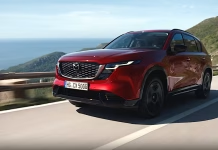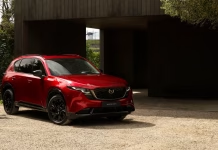Mazda Motor Corp has said it would become the world’s first automaker to commercialize a much more efficient petrol engine using technology that deep-pocketed rivals have been trying to engineer for decades, a twist in an industry increasingly going electric.
The new compression ignition engine is 20 percent to 30 percent more fuel efficient than the Japanese automaker’s current engines and uses a technology that has eluded the likes of Daimler AG and General Motors Co.
Mazda, with a research and development (R&D) budget a fraction of those of major peers, said it plans to sell cars with the new engine from 2019.
“It’s a major breakthrough,” said Ryoji Miyashita, chairman of automotive engineering company AEMSS Inc.
The announcement places traditional engines at the center of Mazda’s strategy and comes just days after Mazda said it will work with Toyota Motor Corp to develop electric vehicles and build a $1.6 billion U.S. assembly plant.
“We think it is an imperative and fundamental job for us to pursue the ideal internal combustion engine,” Mazda R&D head Kiyoshi Fujiwara told reporters. “Electrification is necessary but… the internal combustion engine should come first.”
A homogeneous charge compression ignition (HCCI) engine ignites petrol through compression, eliminating spark plugs. Its fuel economy potentially matches that of a diesel engine without high emissions of nitrogen oxides or sooty particulates.
Mazda’s engine employs spark plugs under certain conditions, such as at low temperatures, to overcome technical hurdles that have hampered commercialization of the technology.
Mazda Motor President Masamichi Kogai sits next to a screen showing a slide about its new engine, to be called SKYACTIV-X, at a news conference in Tokyo, Japan August 8, 2017.
Kim Kyung-Hoon
Executive Vice President Akira Marumoto called Mazda’s engine technology the automaker’s “heart”.
The engine is called SKYACTIV-X and Mazda had no plans to supply the engine to other carmakers, Marumoto said.
AEMSS’ Miyashita said a key issue would be how smooth and responsive the engine is.
“Is it jerky? If so, that would pose a big question when it comes to commercializing this technology.” he said. “Hopefully Mazda has an answer to that question.”
Mazda also said it would introduce electric vehicles and electric technology in its cars from 2019, focusing on markets that restrict the sale of certain vehicles to limit air pollution or that provide clean sources of electricity.
In addition, it said it aimed to make autonomous-driving technology standard in all of its models by 2025.
Mazda’s announced its petrol-engine technology breakthrough on the same day that shares in Japan’s GS Yuasa Corp surged after a newspaper reported that it would start producing a lithium battery that would double the range of electric cars as early as 2020.
Mazda’s share price closed down 1.3 percent. That compared with a 0.3 percent fall in the benchmark Nikkei 225 index.














